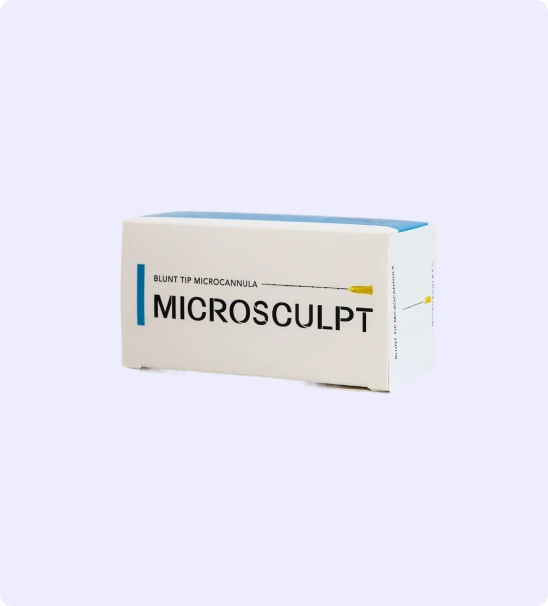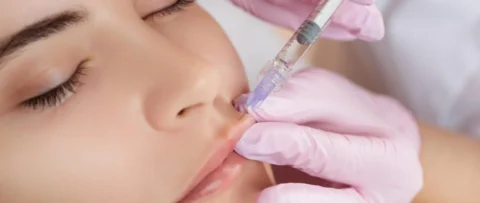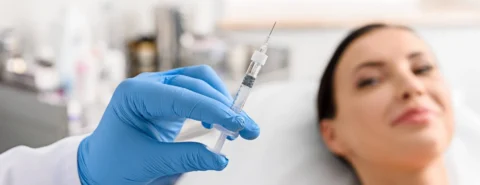Fat deep within the skin loses volume throughout the natural aging process. Facial bones even tend to lose their size over time. That’s why soft-tissue fillers have become increasingly powerful products for facial rejuvenation to regain that lost facial volume.
To get a more natural-looking result with fillers, it’s essential to perform deep volumetric injections at precise sites. Supraperiosteal placement is best performed with a sharp needle or a microcannula. However, which needle is the best when performing these deep volumetric injections?

INJECTIONS YOUR PATIENTS WILL LOVE! CODE “20OFF” TAKES 20% OFF YOUR FIRST ORDER!
Microcannulas are a tool that every great injector must master. Patients want quick results with no downtime. Our microcannulas are high quality and a fraction of the price of our competitors!
You can create an account here.
Microcannulas Vs. Sharp Needle
One significant difference is needle flexibility and control. While sharp-tipped needles are naturally stringent, cannulas provide a more flexible option. This allows them to move more freely and easily when injecting. The flexibility also will enable them to not “cut” more than needs to so that the injection does the least amount of damage as possible. But
Too much flexibility can sometimes be a bad thing. To overcome this, the micro-cannulas offer a solution which is more rigid than many other cannula products, yet still more flexible than any stringent needle. The rigidity allows practitioners, even more, control over their movements in a more predictable and always manageable fashion.
Sharp needles require multiple entry points to deposit the chosen product in a bolus or linear fashion across a given area. Cannulas can be used through fewer entry points to deliver the product. This is because they can be pushed through the tissue freely and easily, without cutting. This makes treatment quicker and less painful without repeated needle entry.
Patient comfort is another plus to microcannulas due to them being a less “invasive” to sharp needles. Traumatic treatments become imperative for practitioners. Studies show that patients recover faster with microcannulas and notice less pain and swelling after the injection. Even without the added benefits to the user, the fact that patients experience more comfort is enough to warrant using cannulas. At FACE, we provide multiple sizes of microcannulas so that you can be ready to serve whatever your patients need.
What Does Testing Show?
The research performed compared Sharp Needles to Cannulas. During testing, researchers set out to analyze the safety profiles of both injection techniques. Researchers injected cadaver heads with dye material and soft-tissue fillers at multiple aesthetic facial sites on the supraperiosteum.
Afterward, the cadaver was dissected for the measurement of dye and filler placement. The researchers discovered the non-traumatic cannula technique resulted in the product remaining confined to the deep anatomic layers compared with the sharp needle technique where the material was found in various anatomic layers that were not intended.
Researchers continued their tests and discovered that both technique’s results were consistent for all facial sites. In the end, microcannula showed more precision in the placement of the injection. While the sharp needle, the material was injected, moved in a recessive direction along the path of the needle path, ending up in multiple anatomic layers. The sharp needle technique also showed a higher complication risk with intra-arterial injection occurring, even though the needle tip was positioned on the periosteum/
-
 23 gauge 50 mm (2 inch) Microcannulas
23 gauge 50 mm (2 inch) Microcannulas -
 22 Gauge 100 mm (4 inch) Microcannulas.
22 Gauge 100 mm (4 inch) Microcannulas. -
 27 Gauge 38 mm (1.5 inch) Microcannulas
27 Gauge 38 mm (1.5 inch) Microcannulas -
 25 Gauge 38 mm (1.5 inch) Microcannulas
25 Gauge 38 mm (1.5 inch) Microcannulas -
 30 Gauge 25 mm (1 inch) Microcannulas
30 Gauge 25 mm (1 inch) Microcannulas -
 18 Gauge 100 mm (4 inch) Microcannulas
18 Gauge 100 mm (4 inch) Microcannulas -
 25 Gauge 50 mm (2 inch) Microcannulas
25 Gauge 50 mm (2 inch) Microcannulas -
 21 Gauge 50 mm (2 inch) Microcannulas
21 Gauge 50 mm (2 inch) Microcannulas -
 21 Gauge 70 mm (2.75 inch) Microcannulas
21 Gauge 70 mm (2.75 inch) Microcannulas







